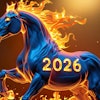
We know how powerful and beneficial cross-functional supply chain collaboration is. Done properly, it can improve agility, reduce costs, lower risk and boost resilience. There’s widespread agreement that internal collaboration across planning, procurement, manufacturing and logistics is critical to success. But while organizations are steadily improving their collaboration efforts, there is still work to do.
In the EY 2024 Supply Chain Survey Bridging the C-suite Disconnect, which surveyed nearly 350 supply chain leaders, a significant majority (80%) reported that they are improving internal cross-functional collaboration. What’s important now is to move beyond the formation of cross-functional teams and delve into methods for accelerating ways of working, establishing joint performance metrics and laying the groundwork for transformation enabled by digital.
In my experience, successful collaboration across the supply chain and beyond is built on four key actions:
- Communicating the story of supply chain as a strategic growth driver
- Creating strong data foundations
- Aligning supply chain metrics with the business strategy
- Delivering tools and technologies that make jobs easier and fun while enabling collaboration
Communicating the Story of Supply Chain as a Strategic Growth Driver
During the COVID-19 pandemic, supply chains gained prominence as they were tasked with delivering critical goods, including medical supplies, pharmaceutical products and consumer staples. However, as the effects of the pandemic have diminished, it appears that the function has lost some of its influence. According to our survey, 88% of supply chain executives say their C-suite views the function primarily as a cost center. While managing costs is undeniably a crucial aspect, the supply chain encompasses much more, including improving growth, agility and sustainability.
Changing leadership perceptions begins at the top with the COO or CSCO. It is their responsibility to champion the view of the supply chain as a pivotal asset for business growth. However, if the supply chain is not integrated across functions, its impact is significantly reduced. With a broader perspective, the COO and CSCO should work not only to connect commercial (sales, marketing and service) with the supply chain but also to include back-end functions such as finance, IT and HR. Of course, beyond the enterprise, there is a need to connect with suppliers and customers; these efforts significantly increase the value and essential role of the supply chain.
Creating Strong Data Foundations
Does this scenario sound familiar? In a business planning meeting, each function brings its own data. In many organizations, there are four sets of forecasts to work from, each originating from different departments within the enterprise: sales, marketing, supply chain and finance. Four different forecasts, often from teams using their own data sets, makes collaboration difficult to say the least.
Collaboration requires trust and a willingness to negotiate trade-offs. Bringing disparate data sets to the table is a surefire way to turn negotiations over trade-offs into battles. One fundamental piece of advice for fostering collaboration is to avoid battles. You want to create winning scenarios that serve the best interests of the organization and that cascade positively into each function's performance.
While modernizing the supply chain through tech and digital was the top priority for organizations in our research, creating a single source of truth for data that everyone in the organization trusts is no mean feat. Strong data foundations are needed. Leading practices to achieve this include implementing a data platform that utilizes a data fabric, automated data collection, real-time data access to bridge communication gaps, and predictive and smart analytics to speed up response times.
Aligning Supply Chain Metrics with the Business Strategy
According to EY research, nearly all (97%) supply chain leaders report facing challenges with supply chain metrics with a typical focus on inventory turns, cash to cash cycle and other efficiency metrics. Supply chain strategies should integrate metrics beyond cost efficiency, to include contributions to customer service, responsiveness and innovation. Examples of these types of metrics might include customer satisfaction such as net promoter score, on time in full (OTIF), rate of returns and forecast accuracy.
Further aligning these metrics with business objectives can help demonstrate the impact of cross-functional collaboration on the organization. Let's take a moment to explore how this might work for the supply chain. For instance, imagine you are tasked with reducing costs and decide to embark on a portfolio rationalization. You could approach this on a cost-to-serve basis, which looks only at costs, or on a margin-to-serve basis, which considers costs, pricing and promotions.
By using the margin-to-serve approach, you're involving commercial and initiating a dialogue. You might say, “We've added too much complexity with all these customer options. We need to cut 50 SKUs.” Commercial might then respond, “I'm OK with losing those 50 SKUs, but give me the ability to make up the revenue. Help us sell more of the remaining SKUs.” By integrating and aligning your metrics, you've broken down internal silos and tackled the problem with the organization's strategy in mind, not just your function's targets.
Delivering Tools and Technologies That Make Jobs Easier and Fun
There are huge opportunities to augment the workforce with the latest technologies, tools and platforms. Artificial intelligence (AI), cloud-based supply chain platforms and data lakes will be instrumental in advancing digital maturity – and the leap from traditional, manual processes to a highly integrated and data-driven autonomous ecosystem brings massive benefits. AI is already making inroads in enhanced forecasting, collaboration and decision-making.
But all the game-changing technologies in the world – even generative AI - won’t shift the dial if your people don’t use them. Adoption is the name of the game. Get them excited by showing them the benefits, how their working lives will be simpler by using them, and training them so they can use the tools safely and responsibly. More mileage can also be gained from configuring existing technologies and training people to use their full functionality.
Taking these four actions can help push internal collaboration from a “should have” to a “do have”: communicating beyond cost, trusting and using the same data for decision-making, aligning metrics with the business strategy to ensure everyone is pulling in the same direction, and building excitement among your people for using the tools and technologies in which the organization has invested. When collaboration is in place and accountability is shared across the organization, the supply chain will be valued as the growth driver it is and regain its seat at the table.



















